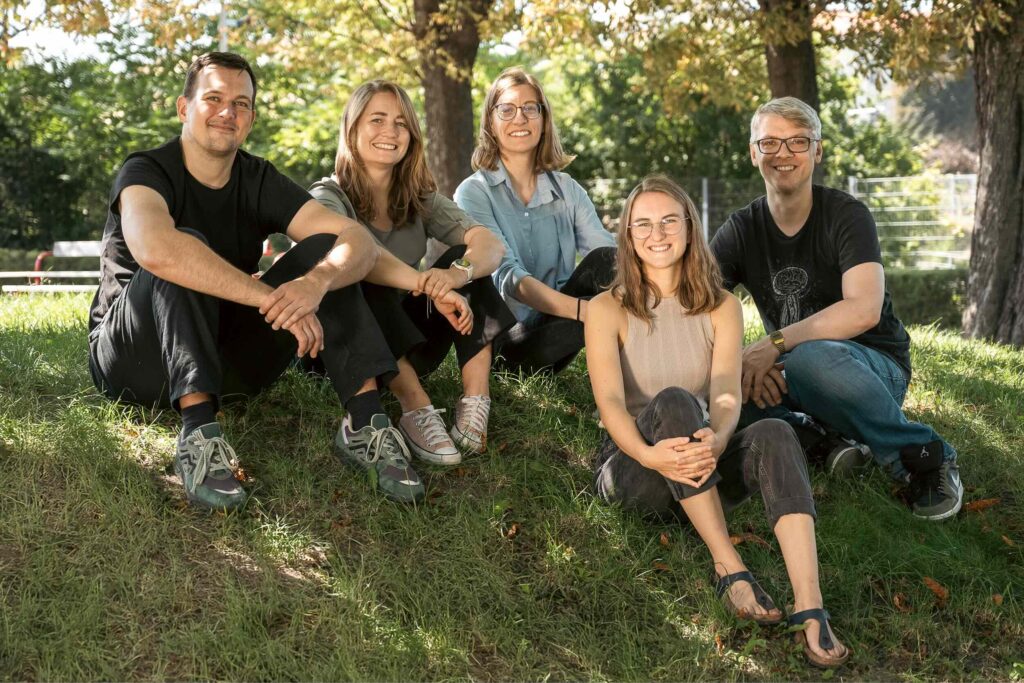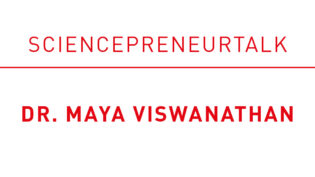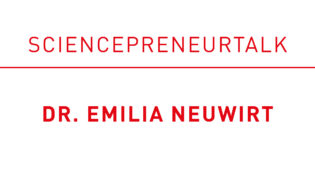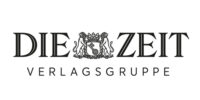
From Forest Floor to Future Innovation
How MyPilz is Transforming Agriculture and Sustainability
Written by
Wolfgang Hinterdobler, CEO and Co-Founder of MyPilz, has spent his career uncovering the hidden powers of fungi — from their microscopic chemical exchanges to their potential as sustainable allies in agriculture, industry, and environmental restoration. In this interview, he shares how his academic research evolved into a pioneering start-up, why native fungi matter for future applications, and how curiosity, collaboration, and entrepreneurial courage can lead to transformative change.
Can you tell us about your academic background and what first sparked your interest in fungi?
I am a botanist by training, specialising in plant secondary metabolites. My journey into mycology began towards the end of my bachelor’s degree, when my supervisor gave a lecture about endophytic fungi – remarkable organisms that live between plant cells in every plant and can influence metabolite production. I was so fascinated by this fungal–plant interaction that I knew I had to explore it further. For my master’s thesis, I travelled to Costa Rica, collected tropical endophytic fungi, and analysed which compounds they produced. During my PhD, I focused on why fungi produce specific compounds in the context of ‘chemical communication’ between fungi and plants.
What fascinates you most about fungal ecosystems and their role in nature?
Fungi are intertwined with all organisms in an ecosystem, acting as recyclers of almost all forms of biomass. They form vast underground networks that provide and distribute nutrients, maintaining the balance of entire ecosystems.
At what point did you realise you wanted to bring your scientific knowledge beyond the lab and into a start-up?
The turning point was recognising the huge gap between the fungal diversity we study in laboratories and the limited range of products that reflect current scientific understanding. I began to see entrepreneurship as a vehicle to bring these discoveries into practical use, where they could have a real, positive impact.
What was the motivation behind starting MyPilz, and how did your partnership with René Lux come about?
The idea for MyPilz came when my long-time friend and now co-founder, René Lux – who grew up on a farm and is an expert in finance and business development – took an agricultural course during the pandemic. One of his teachers mentioned that they couldn’t recommend fungal products because there was no transparency about their origin or effectiveness in Austrian fields. That evening, René rang me to ask if there was a solution. Our conversation quickly evolved into the idea behind our first service: an individualised approach to regenerative agriculture using native soil fungi, naturally adapted to local soil and climate, as beneficial organisms – later named Finde Deinen Nützling (“Find Your Beneficial”).
What were some of the biggest challenges you faced in transitioning from fungal biotechnology research to launching a business?
The transition required a completely different mindset. In research, every finding leads to more questions – in business, you must resist the temptation to follow every interesting lead, at least for a while. The euphoria of the initial idea soon met the reality of months spent on business plans, pitches, and financial projections. Perhaps the hardest part was accepting that the market doesn’t wait for scientific perfection – it needs good solutions now.
Which skills from academia proved most useful in entrepreneurship, and which did you have to learn from scratch?
Systematic problem-solving translated directly to many business challenges. Writing grants and papers prepared me for funding proposals and pitches, and conference presentations were excellent training for investor meetings. However, I had to develop entirely new skills in financial planning and rapid decision-making – switching from ‘learn everything first’ to ‘learning by doing’.
How do you maintain scientific integrity while adapting to market needs and sustainable business demands?
MyPilz was founded as a value-driven company with a mission to bring the latest scientific findings to the market. Scientific integrity is an essential part of our identity and how we present ourselves to the public.
You’ve mentioned having to learn many business skills on your own. Which aspects of entrepreneurship were most foreign to you?
The business world’s relationship with uncertainty was the biggest shift. In science, we minimise variables and aim for statistical significance; in business, you make critical decisions with incomplete data, guided by market signals and intuition. The pace is also entirely different – instead of months of methodical work, you make quick decisions and pivot as needed. One of our first investors told us, “Einfach mal machen, könnt großartig werden” (“Just do it, it could be wonderful”). We printed it the next day, and it still hangs on our office door as a daily reminder to seize opportunities.
Your co-founder brings a business background. How do your complementary skills shape decision-making and company culture?
We complement each other perfectly: I lead on scientific questions while René offers a pragmatic business perspective; for strategy and operations, he leads while I ensure scientific grounding. This healthy tension drives solutions that are both scientifically sound and commercially viable.

MyPilz aims to make fungi accessible through sustainable products and experiences. How did your scientific vision evolve into the company concept?
My vision has always been to understand natural processes in order to help protect nature. Studying chemical communication revealed a huge need for individualised solutions – similar to personalised medicine. Unlike invasive plants and animals, soil fungi are not systematically monitored, so using native strains is key to preventing ecological damage.
What role does your scientific understanding play in product development today?
The key is understanding that in nature, ‘waste’ doesn’t exist. It’s not because one organism consumes everything, but because whole ecosystems reuse resources in cascading cycles. We design products with this in mind, ensuring that resources, by-products, and applications feed into a genuine circular economy.
How do you bridge the gap between public fascination and complex science?
People often picture mushrooms or mould, but that’s just the surface. At the Pilzfestspiele (Fungi Festival), we make the hidden fungal world tangible through exhibitions, films, lectures, excursions, and hands-on workshops. Each time someone learns that mycorrhizal fungi store one-third of global fossil CO₂ emissions or that a teaspoon of soil holds 200 meters of fungal threads, their perspective shifts – and with it, the potential for innovation and investment.

Collaboration seems central to MyPilz. How do you foster it?
We grow like mycelium – extending in all directions, forming complementary connections with companies, universities, NGOs, and citizen science projects. Our Education & Outreach Manager bridges science, art, and community through events like the Pilzfestspiele. Since applied mycology is still young, interdisciplinary partnerships often spark entirely new ideas.
What does “regionalising” fungi mean in practice, and why is it important?
It means using native strains naturally present in local ecosystems. For Finde Deinen Nützling, farmers send us soil samples, and we isolate, identify, and characterise several strains. If a species promotes plant growth and resists pathogens, we propagate it and return it in larger quantities for field application. Native strains are more resilient, surviving winters and thriving in local soils, while avoiding the risks of introducing invasive species.
Why focus on B2B solutions and education rather than large-scale production?
Our strength lies in knowledge and tailored solutions. This approach allowed us to diversify quickly, moving beyond agriculture into industrial, and renewable energy projects. Education and science communication amplify our impact, helping society to see fungi as essential partners in building a sustainable future.
What advice would you give scientists considering entrepreneurship?
“Einfach mal machen, könnt großartig werden!” (“Just do it, it could be wonderful!”). You won’t know if entrepreneurship is right for you until you try. Don’t be put off by what you don’t yet know – business skills can be learned.

Looking back, what do you wish you’d known before becoming a founder?
That I didn’t need to have all the answers. It’s more important to know your expertise and when to delegate.
What is your long-term vision for MyPilz?
To be an international hub for mycological knowledge, turning cutting-edge research into practical applications. Ultimately, I hope to support a decentralised bioeconomy based on local fungal diversity and farming practices that work with their ecosystems, not against them.
How do you see fungi shaping future innovations?
We’re in the century of fungi. In food, they offer sustainable, protein-rich products. In medicine, millions of unexplored species hold unique compounds. In environmental technology, they underpin circular bioeconomies through bioremediation, carbon storage, and petroleum-free materials. We’ve only scratched the surface.
You’ve pushed for fungi to be recognised in biodiversity policy. Why is this important?
Conservation is a collective effort. The Pilzfestspiele is our platform to share this work widely, bringing together scientists, educators, and artists. For MyPilz, preserving biodiversity is not only an emotional commitment – every species lost is also a potential solution gone forever.
What happens next?
Check out our event calendar for upcoming workshops. Stay tuned for more updates, opportunities, and success stories!
Connect with Wolfgang Hinterdobler via LinkedIn, or get a ticket to Wiener Pilzfestspiele!
Interviewer & Editor, Design: Bianca Cramer







